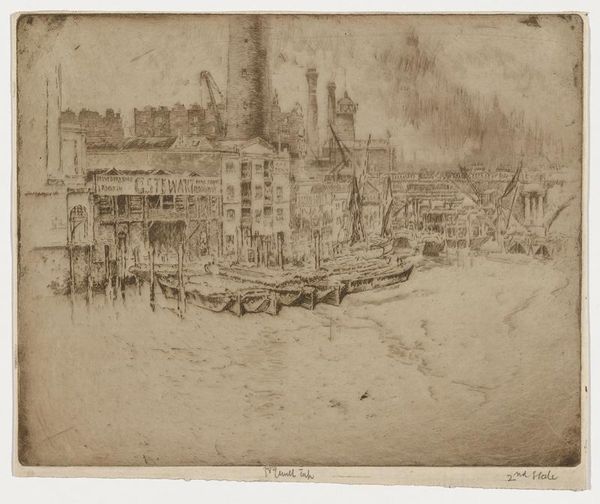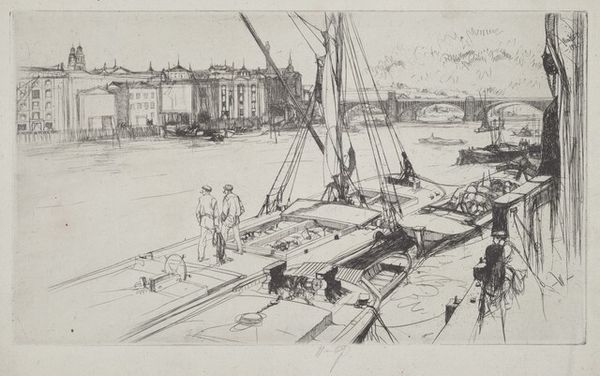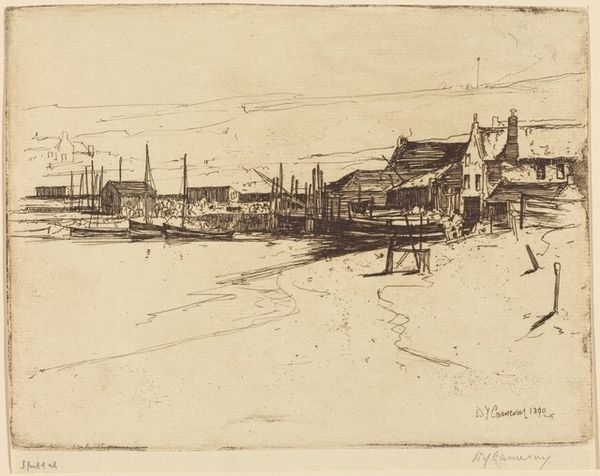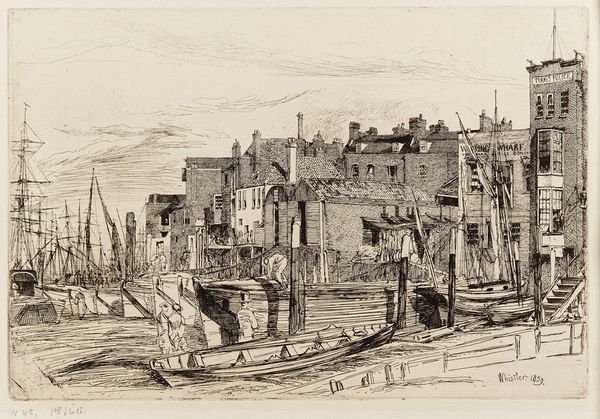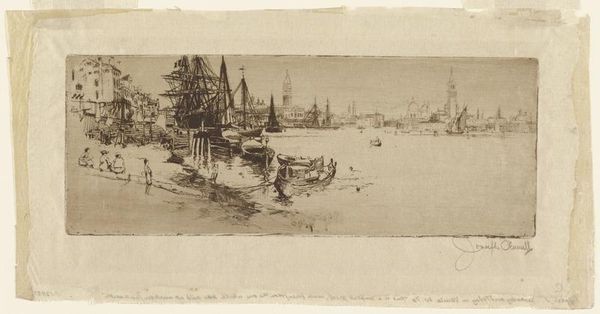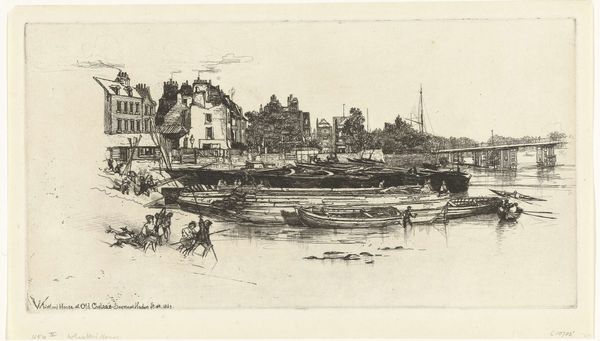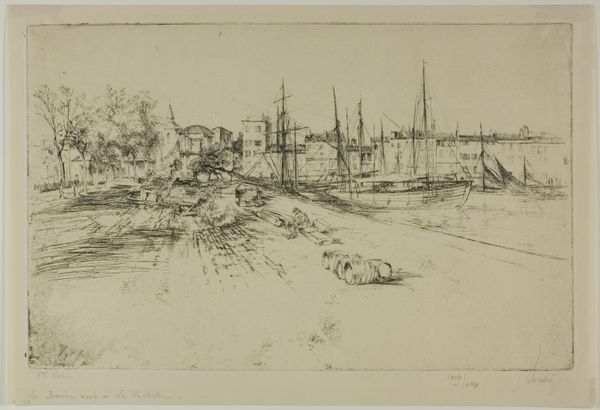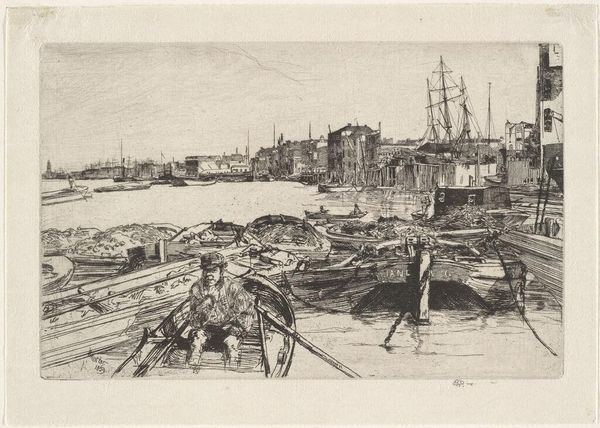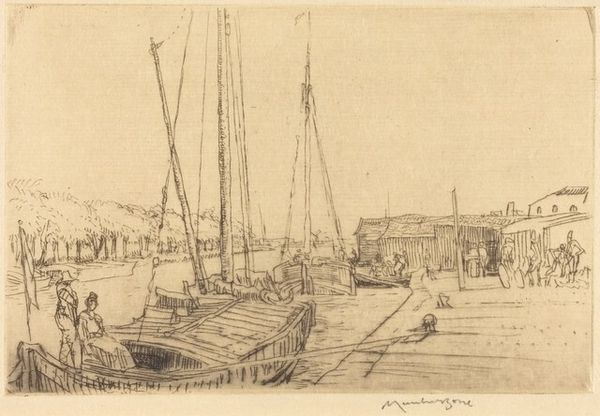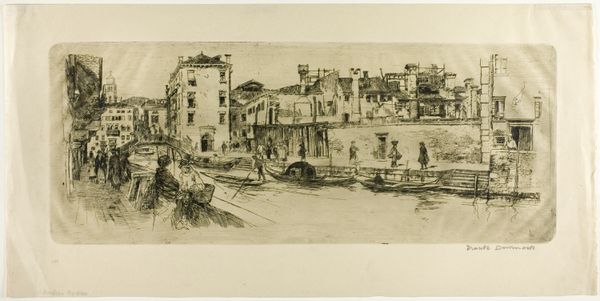
Dimensions: 7 7/8 x 10 7/8 in. (20 x 27.62 cm) (plate)9 3/8 x 11 1/16 in. (23.81 x 28.1 cm) (sheet)
Copyright: No Copyright - United States
Editor: Right now, we’re looking at Joseph Pennell’s etching, "Lanark Wharf," from 1895, currently at the Minneapolis Institute of Art. The way Pennell uses light and shadow gives it such a melancholic feel. There is a whole story implied here, or many untold stories, perhaps? How do you interpret this work? Curator: It whispers stories of maritime bustle and quiet decay, doesn’t it? See how the detailed architecture contrasts with the sketchier boats and water? To me, it's like a memory, vivid in some places, fading in others. Imagine the artist standing there, smelling the brine, the ink capturing not just the scene but the very air of the place, a portal back into an industrial age. It even speaks to the changing role of the artist at that time; a conscious engagement with the industrial rather than nature, right? Editor: Yes, it makes me wonder about the daily lives of people working at the wharf at this time, as opposed to just viewing a scene from afar. You mentioned it might be reminiscent of Baroque—would you say it's the dramatic contrast that suggests this relationship? Curator: Absolutely. That contrast, yes, the dynamic energy, and even the theatrical staging of the scene are reminiscent of Baroque sensibilities adapted to an industrial subject. It is interesting the composition is based on many vertical shapes that frame the boats gently rocking in the water. Where do your eyes travel first, gazing into the composition? Editor: Good question! It is indeed these vertical shapes, especially those wooden stilts of the buildings… Maybe I follow the perspective all the way to the sailboats behind. Thinking about all this— the style, subject, and composition—really enriches the experience. Curator: Agreed! And that’s the magic of art, isn’t it? It invites us to become travelers in time and imagination.
Comments
No comments
Be the first to comment and join the conversation on the ultimate creative platform.

